In this third part of our series of articles on the Wild Atlantic Way, we drive virtually to the wild west of Donegal, to Glenkolumbkille and the cliffs of Slieve League.
Page Contents (click line to jump the text)
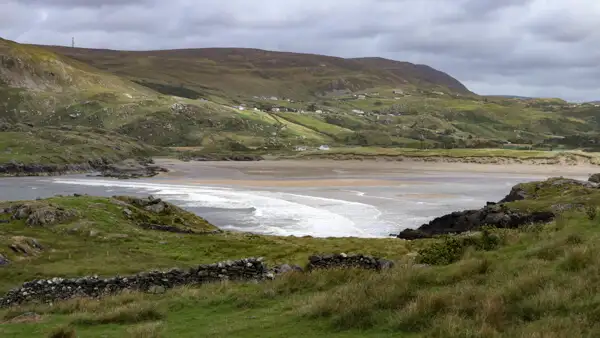
Intro
You first follow the coastal roads from Dunfanaghy to Burtonport. The rugged coastline is dotted with picturesque islands.
Take time to drive out the bays and headlands and you will find the particularly beautiful places, such as the Crohy Head Sea Arch. A rocky outcrop off the cliff forms a spectacular arch there.
Glenkolumbkille and the Folk Village
Glenkolumbkille is a special place. From the surrounding mountains you descend into the valley. Breathtaking views of the coastline can be seen from afar.
The small former fishing village is embedded in the wild landscape: Mountains at its back, high cliffs and small sandy beaches, rocks everywhere and a bit of fertile land in between.
What is today a dreamlike landscape was once one thing above all: inhospitable and barren. Fishing was risky on this wild coast and agriculture was not very profitable. There were stones – and little bread.
It is all the more astonishing that people settled in this area as early as 3000 years ago! The name Glencolumbkille, however, is younger. It is derived from St Columba, one of the three important Irish patron saints, and the name originated in early Christianity, probably in the 6th century.
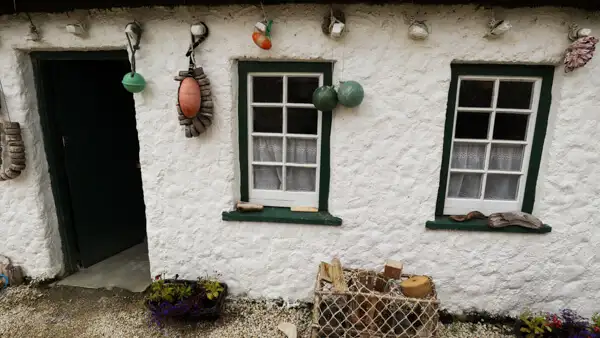
Until the 1950s, rural life in many areas of Donegal was characterised by unemployment and poverty – including here in Glenkolumbkille. Villages lacked electricity, running water and sewage systems. Young people left their villages to find an income in the distant towns. As a result, the communities were ageing more and more.
An enterprising Catholic priest, Father James McDyer II, founded several community initiatives to improve these conditions, which he did very successfully over the next three decades. He provided work, better living conditions and support from Dublin.
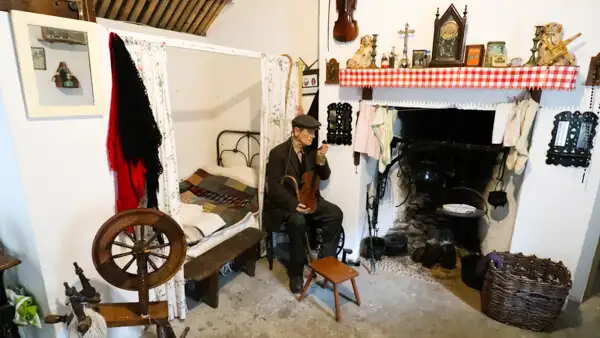
The Glenkolumbkille Folk Village was established in 1967 as a small tourist business to provide an additional source of income for the villagers.
It is an open-air museum with several thatched cottages that are faithful replicas of 17th, 18th and 19th century country houses. The cottages are furnished inside according to the period and tell of the life of the common people in their time.
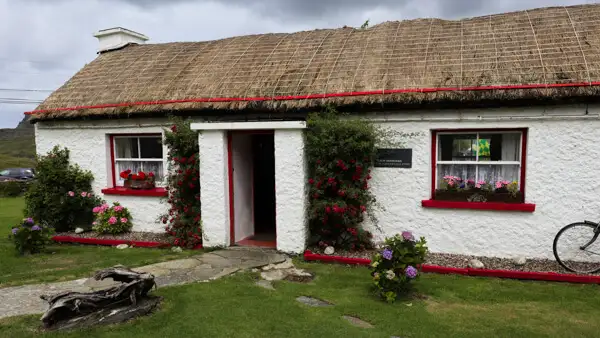
The small village is very nice and interesting to visit. You can join a guided tour or wander through the village on your own and see the cottages from the inside.
A small, simple café provides the weary motorcyclist with warm soup and coffee, and so fortified we can continue along the wild coast.
The Silver Strand
A little further along the coast on tiny roads you reach Silver Strand. A good car park, a beautiful view of the light sandy beach, framed by the bay in the shape of a half moon, and a long wooden staircase leading down to the beach – quite nice, you could have been there! And then we can go on again…
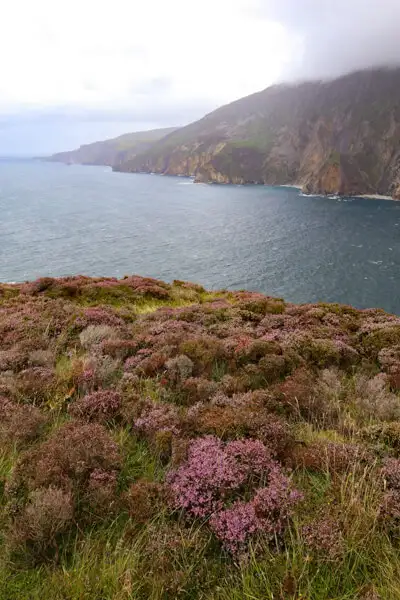
The Cliffs of Slieve League
Near Teeling you will find signs for Bunglass Point. Even if the bike is rolling nicely, you should definitely find the brake and follow the signs!
The cliffs of Slieve League in County Donegal in the northwest of Ireland are among the highest cliffs in Europe, at over 600 metres high. The mighty cliffs and the unspoilt nature surrounding them are one of Donegal’s main attractions. The cliffs can be seen from a high vantage point, Bunglass Point.
They are far less crowded than the Cliffs of Moher and are particularly scenic. The cliffs of Slieve League are definitely worth a visit.
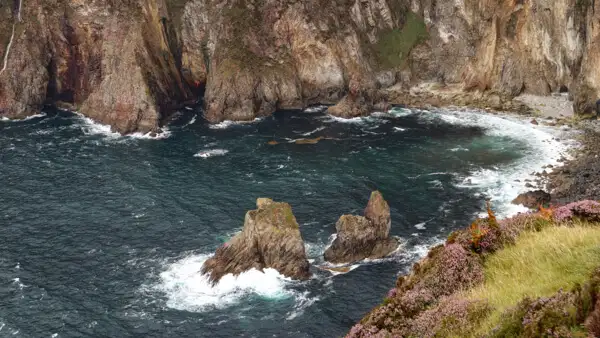
The best place to go by motorbike is Bunglass Point. There is a car park at the foot of the cliffs and a second car park directly at the Bunglass Point viewpoint. From here you can admire the breathtaking cliff scenery.
In the deep waters near the cliffs, you can often see whale sharks (basket sharks), dolphins and sea lions. Boat trips are also available and there are exciting walking trails to experience, such as the One Man`s Path.
Donegal and Donegal Castle
Donegal is the main town of the county of the same name. Several hotels, B&Bs and guesthouses invite you to spend the night here. The harbour town is small but nice and there are several pubs with restaurants.
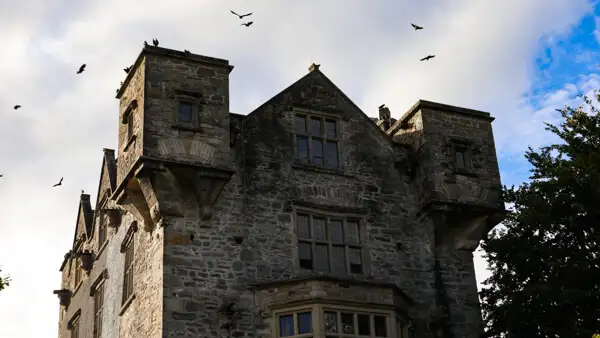
Donegal Castle is a small castle that was the seat of the Mc Donnell clan for a long time. Built in the 15th century as a Norman towerhouse, it was extended into a nice castle in the 16th century. It can be visited and is beautiful to see inside and out.
And so another beautiful day draws to a close – but that doesn’t matter, because tomorrow is a new travel day!
Here you will find the next articles in this series about the Wild Artlantic Way:
More interesting articles for you
IRELANDS WILD ATLANTIC WAY – PART 4 – CEIDE FIELDS AND ACHILL ISLAND
IRELANDS WILD ATLANTIC WAY – PART 5 – MAYO AND CONNEMARA
IRELAND’S WILD ATLANTIC WAY – PART 1 – AN INTRODUCTION TO THE WORLD’S LONGEST COASTAL ROAD
A ROUND TRIP BY TRAIN AND BUS THROUGH IRELAND – ALL INFORMATION FOR YOUR TRAVEL PLANNING
Photo credits cover photo: Cliffs of Slieve League, photo by Ulrich Knüppel-Gertberg (www.irland-insider.de, www.ireland-insider.com)